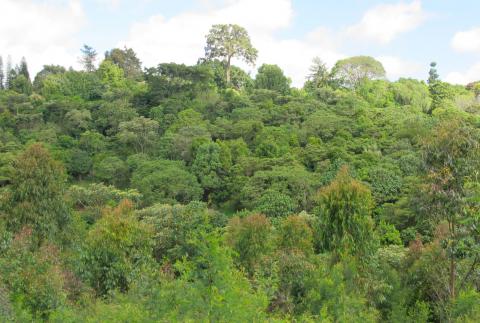
Poorly planned and executed tree planting schemes can harm the environment, experts warned as they set out “golden rules” for restoring forests.
Planting trees to suck up carbon emissions can be presented as an “easy answer” to tackling the climate crisis, but large-scale plantations can actually cause more problems than benefits, scientists have said.
The researchers from the Royal Botanic Gardens, Kew (RBG Kew) and Botanic Gardens Conservation International (BGCI) are urging a “right tree in the right place” approach to make sure restoring forests benefits people and the planet.
A study by the scientists found that in some cases, tree planting schemes did not increase the amount of carbon being stored in the landscape and could hit wildlife and people’s livelihoods.
Planting large areas with only a few, non-native, species can push out wildlife, reduce the amount of carbon being stored in soils and the forests, and reduce the land available for crops – potentially causing more deforestation elsewhere.
But allowing areas of forest to naturally regenerate is cheaper and can create up to 40 times more potential for carbon storage than plantations, while picking the right trees and places for planting can help restore nature and boost people’s livelihoods.
The team’s 10 golden rules, set out in a paper published in the journal Global Change Biology, focus on protecting existing forests first, putting local people at the heart of projects, and using natural regrowth of trees where possible.

